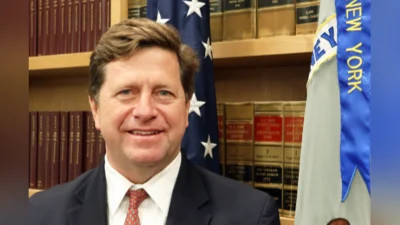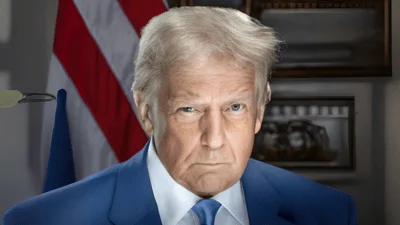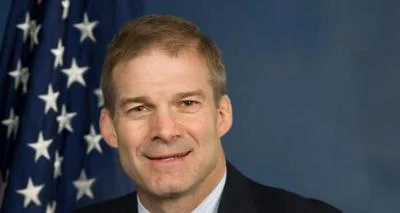Deputy Secretary of Commerce Rebecca Blank Remarks at National Congress of American Indians Thank you, President Keel. Good morning everyone. It’s an honor to be here with the National Congress of American Indians.
In his State of the Union address, the president said we need to “reignite the true engine of America’s economic growth–a rising, thriving middle class.” Over the past few years, we’ve seen steady economic growth in Indian Country and across the U.S.–still not as fast as we would like–but many businesses and families have started to regain their footing as we continue to dig our way out of a deep recession.
Our top priority at the Commerce Department–and across the administration–is to accelerate economic growth in order to bring more jobs, more opportunities, and more prosperity to the middle class.
We must do all we can to empower job creators in every corner of Indian Country who are working to build better lives for themselves, their families, and their communities.
That includes the small manufacturer and his workers who have set up shop on a reservation. It includes the American Indian entrepreneur who is launching her startup in a big city. And it includes folks like you who are finding new ways to help businesses in your communities to grow and create jobs.
The Commerce Department is committed to helping in any way that we can. Today, I’d like to outline just a few of the ways we’re supporting Indian Country.
First, we’re fulfilling a key commitment that the president made. At his first Tribal Nations Conference in 2009, President Obama directed every federal agency to create a policy for tribal consultation and coordination.
The Commerce Department has worked closely with tribal leaders to do just that. Over the past year, many of you provided valuable input as we created a policy that will provide the foundation for a strong and enduring government-to-government relationship.
I’m pleased to announce that our policy will soon be finalized and published in the Federal Register.
Tribal leaders should receive a copy with a signed letter of thanks for their input on developing this policy. We truly appreciate your partnership in helping us complete this work. Thank you.
At the same time that we were developing that policy, the bureaus of the Commerce Department have also been hard at work to support and empower Indian Country.
Our Minority Business Development Agency–MBDA–is a great example. They’ve worked aggressively to help Native-owned businesses over the past four years.
In the president’s first term, MBDA helped nearly 3,000 Native-owned businesses secure nearly $1.4 billion in contracts and capital.
We want to do even more, so we’re making smart investments. Last year, at this event, we (Secretary Bryson) announced that MBDA would reorganize itself to better serve Indian country.
We delivered on that promise. In September, we awarded $6.6 million to five new business centers–centers that will help American Indian and Alaska Native entrepreneurs and businesses across the country.
These centers are based in Anchorage, Bismarck, Santa Fe, Tulsa, and Central California. They’re going to provide more tools to help American Indian and Alaska Native businesses compete and grow.
And, looking forward, building on our first-ever White House forum with tribal business leaders, MBDA is partnering with the National Center for American Indian Enterprise Development to participate in its Reservation Economic Summit next week in Las Vegas–I know that many of you will be there.
Directly empowering business owners through MBDA, however, is only one small part of how the Commerce Department is strengthening Indian Country. The National Telecommunications and Information Administration–NTIA–is also making a big impact.
For example, we all know that there is still much work to do to connect tribal communities to each other and to the world through broadband technology. Right now, we have about 50 broadband projects underway to help these communities through our Broadband Technology Opportunities Program.
In some cases, the communities getting these grants don’t even have phone lines. So, we’re helping Indian Country take not just a step forward in telecommunications, but in fact a giant leap.
More recently, NTIA has helped launch a 7-billion-dollar effort to make sure our firefighters, police officers, and emergency medical teams have a strong public safety communications network–a network that helps them do their jobs, keep our communities safe, and save lives.
It’s called FirstNet. States are taking the lead on applying for FirstNet grants, but they’re going to need your help. In fact, they’re required by law to reach out to their tribal jurisdictions.
I want to particularly thank Brian Howard from NCAI. This past Friday, he led a webinar with folks from Indian Country to discuss how you can get involved with your own state’s application for funding. Brian is here today, I believe. Thank you, Brian.
I’ll give one more example of a Commerce Department bureau that is stepping up its efforts to support Indian country–the Census Bureau.
As we announced last year, we saw a 27-percent jump in the number of people who identified as American Indian or Alaska Native from the 2000 Census to the 2010 Census.
The Census Bureau is going to keep gathering good data and building more awareness of the size of this community.
To help us do that, I’m pleased to say that we recently hired Cinda Hughes to serve as our Tribal Affairs Liaison at Census. As you may know, Cinda was working at NCAI until just a few years ago.
She is going to strengthen our collaboration with NCAI and tribal leaders as we prepare for the 2020 Census, as well as other Census surveys that impact Indian Country. We want to do an even better job of data collection among American Indians–both in and outside of tribal lands–in 2020 than we did in 2010.
And while the Census Bureau, MBDA and NTIA continue to do great work for Indian Country, the Commerce Department as a whole will continue to work across the federal government.
That’s especially important when disaster strikes and we all need to pull together.
For example, I know the Deepwater Horizon oil spill hit many communities along the Gulf Coast. The administration worked tirelessly to address the short-term impacts of this spill, but today we still have much work to do.
The Commerce Department is leading the new Gulf Coast Ecosystem Restoration Council along with governors from the five affected states–as well as the EPA, the Army, and the departments of Interior, Agriculture and Homeland Secretary.
As Chair of the Gulf Restoration Council, I am pleased to say that the Council has established a tribal engagement team. This team will reach out to the tribes affected along the Gulf Coast over the coming months. These conversations will help us as we work with states to develop a Comprehensive Plan for Gulf restoration and to implement that plan in the years ahead.
Thank you in advance for helping with this important work.
Finally, let me say a few words about the sequester that went into effect last Friday.
Let me be blunt: This is a terrible policy action. These cuts are drastic, arbitrary and deep. They’ll hurt businesses and the economy. They were designed to be so onerous that their threat would force Congress to take intelligent actions to reduce the deficit. As they are designed, they are unacceptable.
These cuts will hurt communities across the U.S., including Native-owned manufacturers, exporters, and other businesses that rely on services and data from places like the Commerce Department.
These cuts will hit the programs that our communities depend on every day: ranging from education for our children, to services for our seniors, to workforce training programs, and much more.
Most immediately, these cuts will cause hardworking Americans to lose their jobs. Altogether, hundreds of thousands of people could be added to the unemployment rolls.
This is a self-inflicted wound to our continued economic expansion. It’s the last thing we need right now.
We can reduce our deficit, but we need to do this while still making key investments in areas like education, infrastructure rebuilding, and basic R&D.
Over the last few years, both parties have worked together to reduce the deficit by more than $2.5 trillion dollars. The president has laid out a plan to Congress to further reduce our deficit through sensible spending cuts and tax reforms such as closing some wasteful loopholes. He met with Congressional leaders on Friday and he stands ready to work with Congress on this.
And I want to echo what he said last week in Virginia. We’ve got to stop having these manufactured crises. He said, “If it’s not a good way to run a business, it’s sure not a good way to run a country.” I’m sure that all of the leaders here today would agree with that sentiment.
Overall, my commitment to all of you today is this: The Commerce Department will continue to listen closely to all of you–and to people throughout Indian Country.
We will work with you wherever possible to empower and support your communities, building on the success we’ve achieved together over the past four years.
Please don’t hesitate to reach out to my Senior Adviser on Native American Affairs, Dee Alexander, who many of you already know. Dee, Cinda and all of us are eager to hear your questions and suggestions, and we will continue to work every day to strengthen the government-to-government relationship.
Together, I know we can ensure a bright and prosperous future for our many peoples–from the villages of Alaska, to the plains of our heartland, to the skyscrapers of our cities. Thank you.
Source: U.S. Department of Commerce








